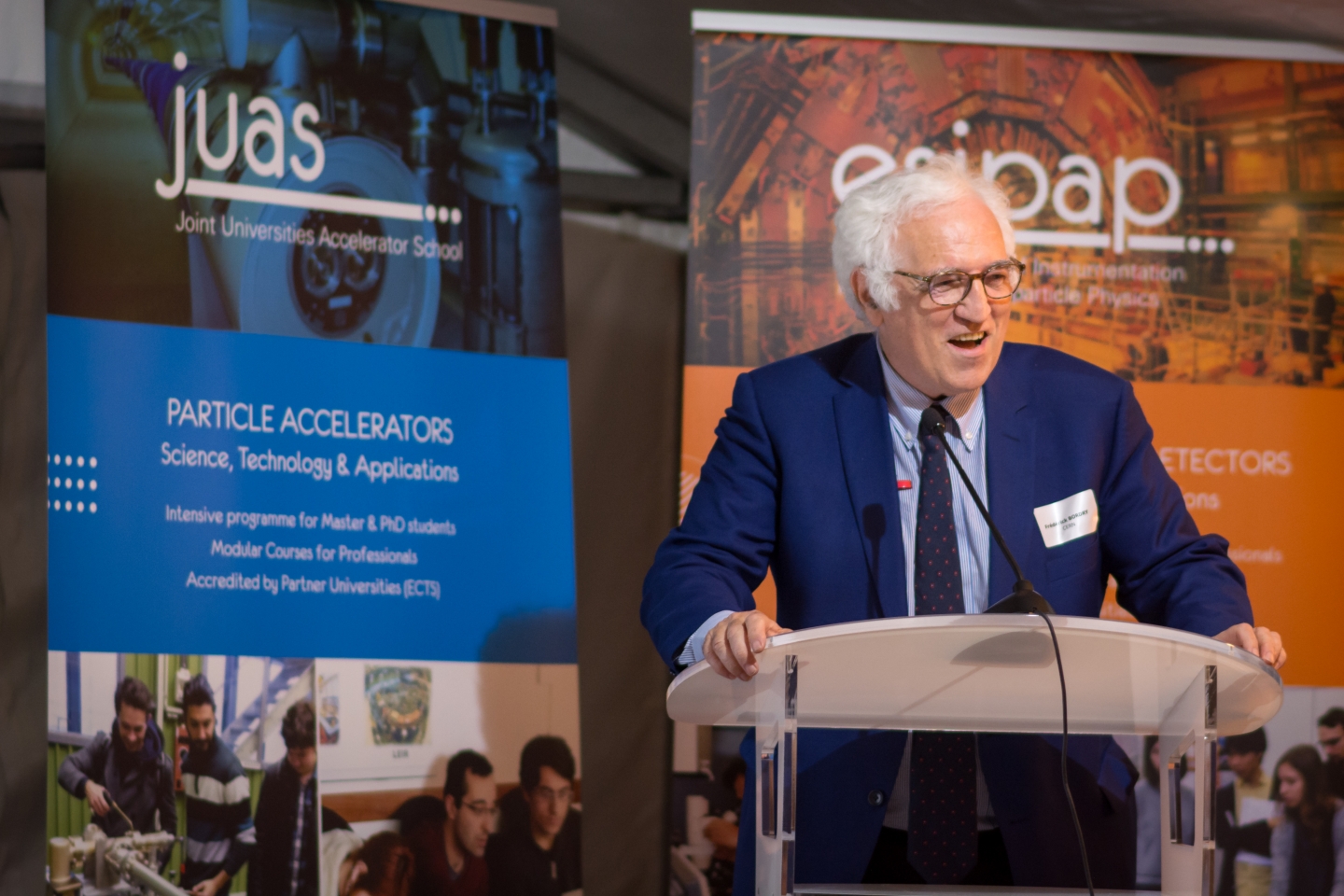More than 100 people attended an event organised by the ESI (European Scientific Institute, Archamps) on 15 February to mark the twenty-fifth anniversary of JUAS (Joint Universities Accelerator School) and the fifth anniversary of its sister school, ESIPAP (European School of Instrumentation in Particle & Astroparticle Physics). Among them were current and former students of both schools, including a sizeable number of staff and fellows, as well as PhD and technical students from CERN who had participated in JUAS or ESIPAP in recent years.
ESI’s President, Hans Hoffmann, opened the proceedings with a reminder of the need for international and interdisciplinary collaboration in order to tackle major societal challenges, such as chronic disease and energy transition. “We need to bring all potentially relevant fields of expertise together to think outside the box,” he said. “This is how, in all modesty, ESI conceives its thematic schools.”
Philippe Lebrun, former Head of Accelerator Technologies at CERN and JUAS Director since 2017, reminded the audience that JUAS exists to teach “the science and technology of accelerators, which are specific domains of physics and engineering in their own right, along with their latest developments, to the designers, builders and operators of tomorrow’s machines”. Overall, more than 1000 physicists and engineers have been trained at JUAS since it was founded.
These thoughts were echoed by Johann Collot (Grenoble), ESIPAP’s Director and a long-standing member of the ATLAS collaboration. Citing the unprecedented international effort under way to reconcile microscopic physics and modern astronomy, he told students they were lucky to be able to focus their imaginations on such a noble task, “which stems from experimentation and whose conclusion will be revealed through experimentation”.
All three speakers concurred that “ESI is one of the rare places in the world where such schools can be organised at an affordable cost.”
Particular thanks are due to Frédérick Bordry, CERN’s Director of Accelerators and Technology, who was representing CERN’s Director-General, Fabiola Gianotti, and whose concluding remarks affirmed the importance of JUAS and ESIPAP in preparing the next generation of particle-accelerator and detector scientists and assured ESI of CERN’s ongoing support.
For more information about these schools, see the website of the European Scientific Institute

